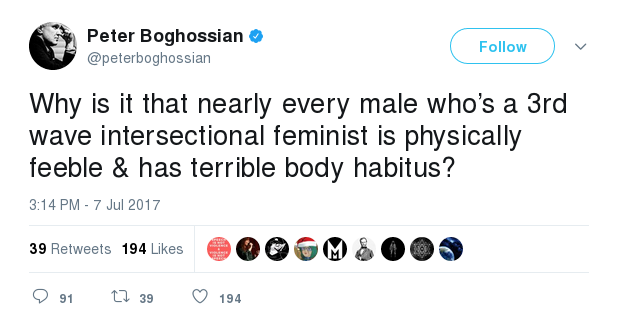[CONTENT WARNING: TERFs]
Gendered restrooms are a relatively recent phenomenon. Before then restrooms were unisex, but not in the way you’re thinking.
… public facilities in Western nations were male-only until the Victorian era, which meant women had to improvise. If they had to be out and about longer than they could hold their bladders, women in the Victorian era would urinate over a gutter (long Victorian skirts allowed for some privacy). Some would even carry a small personal device called a urinette that they could use discretely under their skirts and then pour out, [Sheila] Cavanagh said. […]
This lack of female facilities reflected a notable attitude about women: that they should stay home. This “urinary leash” remains a problem in some developing nations, said Harvey Molotch, a sociologist at New York University and co-editor of “Toilet: The Public Restroom and the Politics of Sharing” (New York University Press, 2010). Women in India today, for example, often have to avoid eating or drinking too much if they have to be out in public, because there is no place for them to go, Molotch told Live Science.
But with the rise of the Industrial Revolution and changing attitudes towards gender, forcing women back into the home wasn’t tenable. Instead, during the last quarter of the 19th century a new philosophy became dominant.
Scientific discoveries at the time showed that working women were “unable to [physically] withstand strains, fatigues, and privations as well as [men],” so sex-separated restrooms provided “a protective haven . . . where a woman could seek comfort and rest when her weak body gave out on the job.” Maintaining separate facilities that were “properly screened” also provided more privacy to both men and women with regard to their bodies and bodily functions, an obsession derived from Victorian society. By providing a separate space for the special needs of women and protecting the privacy of all workers, sex-separated bathrooms upheld “[l]ate nineteenth century concerns about germs and sanitation . . . [and] early nineteenth century ideological concerns of pure womanhood.”
Governments began mandating sex-segregated washrooms in the workplace, starting with Massachusetts in 1887. As attitudes towards women changed, however, the reasons for segregation shifted.
Though modern thinking has certainly progressed and women are not treated as inherently inferior as they once were, the current argument that sex-separated restrooms provide greater safety for women harkens back to the nineteenth century justifications for separate restroom facilities. For example, literature opposing transgender bathroom access focuses heavily on protecting the safety, privacy, and dignity of women and girls, yet rarely mentions any issues men might have with sharing a restroom with a female-to-male transsexual. Even some transsexual women wish to maintain the “safe haven in a male dominated world” of a women’s restroom “where women can have their own space without needing to worry what a man might do (in front of them, to them, or to their daughters and young sons.)” At the very least, these opinions expose an underlying belief that women and girls are more fragile than men, have a deeper need of privacy than men, and are more likely than men to be afraid or offended by the notion of sharing a restroom with a male-born transgender woman.
Faced with this information, you’d think a feminist would tread very carefully. Yes, there’s a gender imbalance in who commits sexual assault, but the historic use of washrooms to control women should give pause about banning someone else from using them.
TERFs don’t pause, they’re fully in favour of “bathroom bills.” Even when a butch lesbian gives a convincing plea against this legislation, they still find a way to justify support.
Those of us who believe that men belong in the men’s washroom come in two major types—conservatives and feminists—but this author doesn’t distinguish between the two groups. Conservatives understand that certain men will use any excuse to prey on women and children and they want to protect them. They are also homophobic and do not accept ordinary lesbians and gays, and they promote traditional gender roles and marriage. Feminists know that men with sexual fetishes like to declare that they have a gender identity and therefore have a right to expose themselves in women’s locker rooms. We differ completely from conservatives because we are against gender roles and sex stereotypes. We want the entire range of women in all our diversity to feel comfortable in women’s spaces, which will be accomplished by eliminating sexism and homophobia. […]
She’s implying here that the reason for sex-segregated facilities is the misguided notion that women need protection from men, and that people only believe that women need protection because of gender roles/stereotypes about women. But in the real world, women do need protection from men, because men abuse women on a regular basis through assault, rape, harassment, stalking, flashing, taking photos without consent, and the list goes on. Unfortunately this writer didn’t check the stats on violence against women before writing her article.
This is evidence that TERFs are not truly feminists: they advocate for the elimination of sex stereotypes, yet push a stereotyped view of sex. They are ignorant of feminist history, and advocate for sexist policies that date back to the Victorian era. The aforementioned division between “conservatives” and “feminists” is rich, especially since the two love to team up to oppose the rights of trans* people.
The real issue behind “bathroom bills” is control over who gets to enjoy the public sphere, security is secondary at best.

